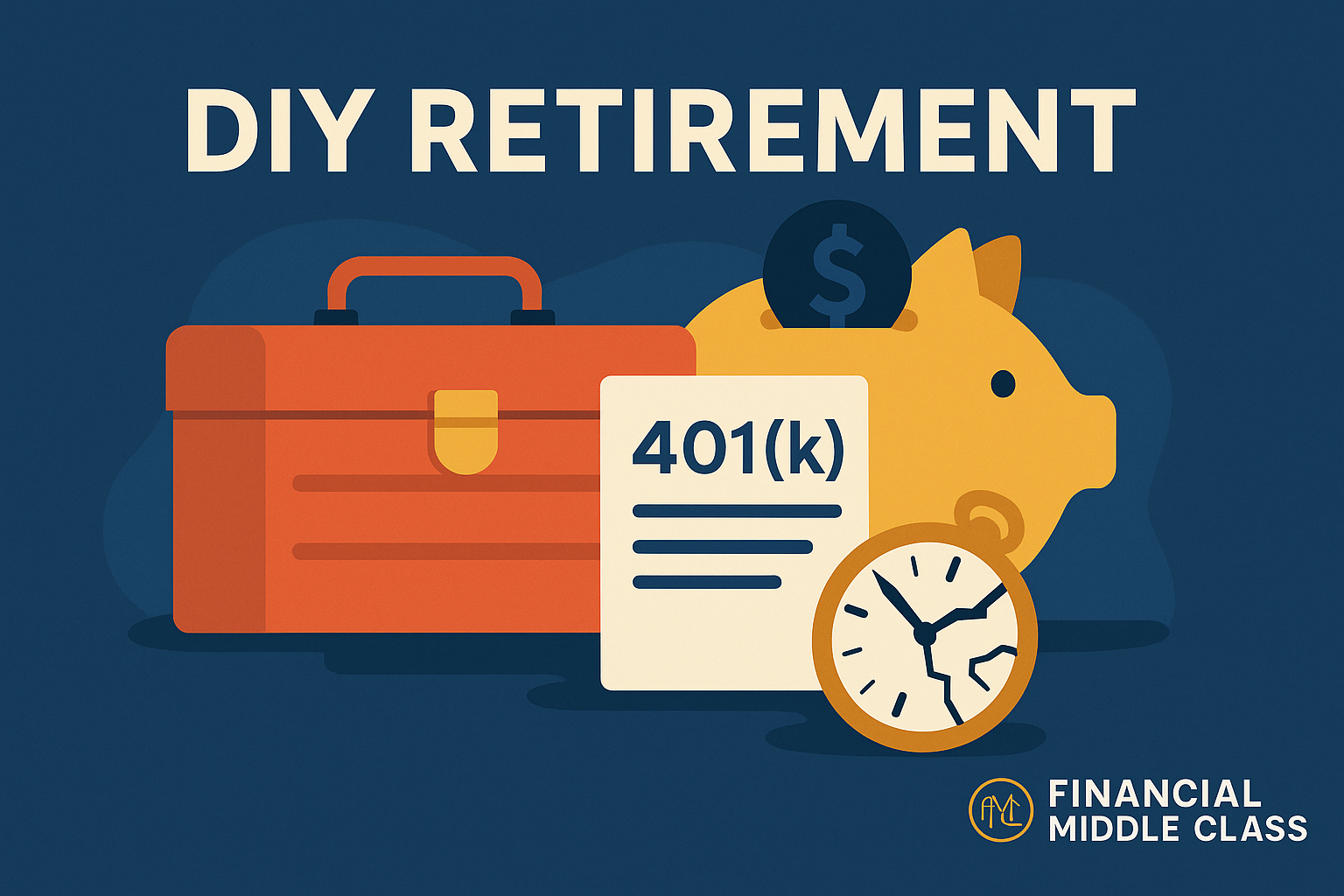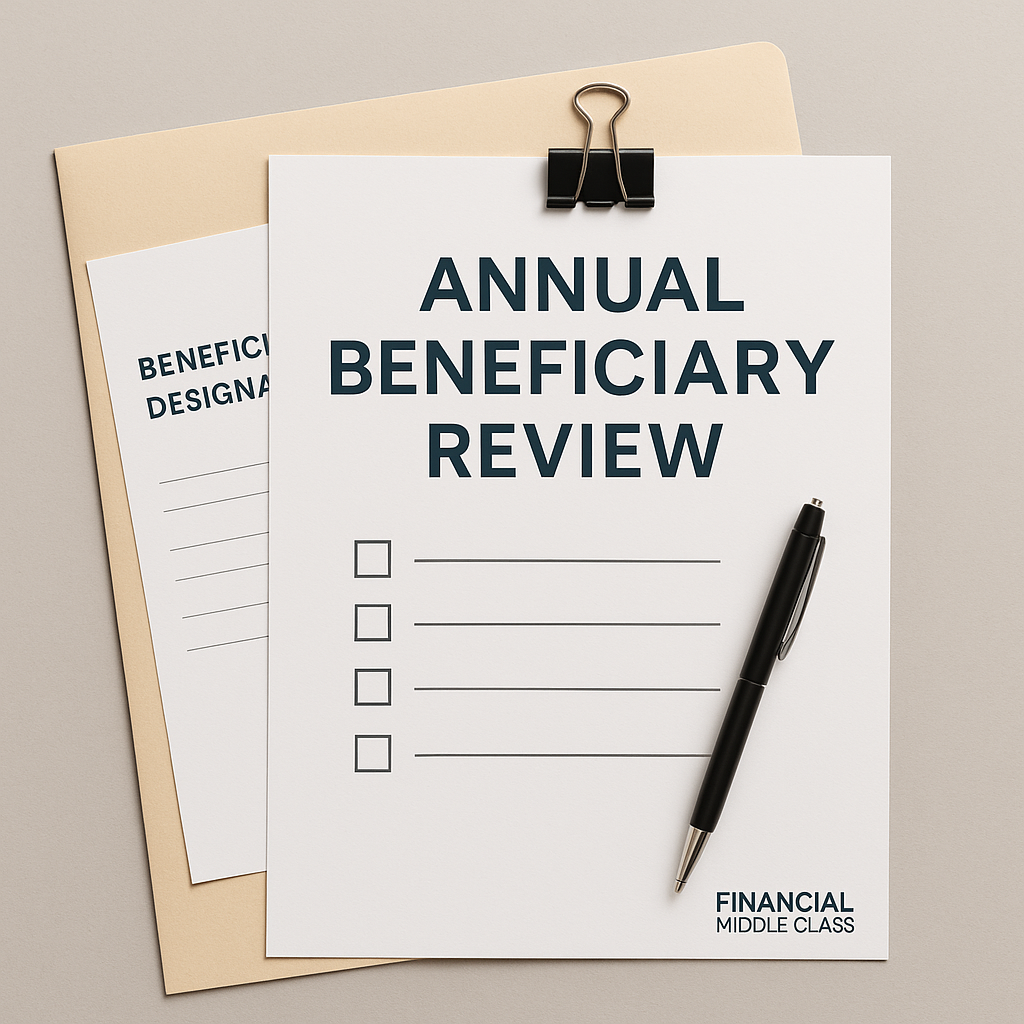
Why Saving Is So Hard for Middle-Class Americans (and the 12-Month Plan That Works)
By Article Posted by Staff Contributor
The estimated reading time for this post is 215 seconds
Most middle-class households aren’t “bad with money.” They’re paying a quiet tax in fixed costs and frictions—housing, healthcare, childcare, and high-APR debt—that eat the raise before it ever hits savings. The way out isn’t hustle culture or guilt; it’s design. Make savings the default, attack the big bills, and protect your streaks.
The quick picture (what the data actually says)
- Personal saving rate is thin—4.6% in August 2025—leaving a small cushion for emergencies or big goals.
- Emergency buffers are fragile. In the Fed’s 2024 data, only ~63% of adults say they could cover a $400 shock with cash or its equivalent. The rest would borrow, sell something, or fall behind.
- Housing pressures are historic. In 2023, 50% of renters were cost-burdened; 27% were severely burdened (≥50% of income). That’s a record.
- Health premiums keep rising. Employer family premiums averaged $25,572 in 2024 and climbed ~6% in 2025 to nearly $27,000; workers’ average share: $6,850.
- The easiest savings machine is uneven. In March 2025, among private-industry workers: 72% had retirement benefits available, 70% had access to a defined-contribution plan, and ~53% participated—a tell that access and default design still matter.
- Pay-later is now normal. As of fall 2023, 14% of adults used BNPL in the prior 12 months. For some, late payments and stacked plans siphon dollars that should fund savings.
- Financial education is improving but uneven. As of Oct. 2025, 30 states require a standalone personal-finance course for graduation; quality and rollouts still vary.
Why saving is so hard (7 drivers you can actually fix)
- The fixed-cost squeeze
Housing, healthcare, insurance, and taxes are “must-pay.” When they outrun paychecks—especially in high-cost metros—savings becomes the leftover, not a line item. (Rent burdens at a record.) - Uneven access to automatic saving
Default design wins. Where auto-enroll and payroll savings exist, balances rise. But too many workers—especially at small firms—still have no plan to join. (Private industry: 72% retirement benefits available; participation ~53%.)
- Credit crowd-out
Easy, expensive credit (including BNPL) quietly diverts future savings into fees and interest. Usage keeps climbing; late payments aren’t rare.
- Income volatility
Hours, bonuses, gigs fluctuate. A thin buffer turns small dips into late fees and credit usage, compounding the problem. (See the $400 stat.)
- Behavioral gravity
Present bias and one-tap shopping beat willpower. This is why automation beats motivation.
- DIY retirement
Fewer pensions mean you must plan, invest, and stay the course—while juggling mortgages, kids, and healthcare costs. Defaults matter more than lectures.
- Education ≠ capability
High school is nearly universal, but practical money training only recently became widespread. 30 states now require a PF course; implementation is still uneven.
The Financial Middle Class 12-Month Savings Plan
Principle: Make saving automatic, cut the big fixed costs, and protect your on-time streaks.
Month 1–2 — Automate & Buffer: Open a high-yield savings account. Auto-move 3–5% of take-home on payday. Build a 1-month starter emergency fund first (before chasing 3–6 months). (Fed data shows small shocks derail households.)
Month 3 — Cut fixed costs: Re-shop insurance, phone, internet; cancel dead subscriptions. These changes beat “skip the latte” economics.
Month 4 — Use payroll defaults: If you have a plan at work, enroll and set auto-escalation. No plan? Set a payroll split to savings. State auto-IRAs are scaling (1M+ savers; $2B–$2.5B in assets).
Month 5 — Tame debt cost: Attack highest-APR balances; beware stacking BNPL plans.
Month 6 — Sinking funds: Set up monthly buckets for car repairs, home maintenance, and insurance deductibles to avoid new debt.
Month 7 — College fund: Open a 529; automate $25–$100/mo. Small + early beats big + late.
Month 8 — Housing audit: Consider a roommate, downsizing, or timing a refi; homeowners can appeal property assessments if off-base. Lower the housing ratio; raise the savings rate.
Month 9 — Lock the split: Route the first dollars of every paycheck to savings, then checking.
Month 10 — Tax routing: Use HSA/FSA if offered; right-size withholding.
Month 11 — Stress test: Practice a 30-day “reduced income” month to find leaks before a crisis.
Month 12 — Ratchet up: Raise savings by +1–2 points and set holiday guardrails.
Policy & employer design that actually works
- Auto-enroll + auto-escalate in workplace plans; add payroll emergency “sidecars.” Participation gaps prove design beats good intentions.
- State auto-IRAs: Momentum is real—>1.0M funded accounts and $2–$2.5B in assets across programs—bringing payroll savings to workers without plans.
- Housing supply & affordability measures (zoning, permitting, preserving low-rent stock) directly free up monthly cash for saving.
- Healthcare cost management (benefits design + employee choices) matters as premiums rise.
RELATED ARTICLES
DIY Retirement: How Workers Became the Risk Bearers
The estimated reading time for this post is 299 seconds The Plain‑English Take There was a time when a steady paycheck, a pension, and a gold watch weren’t a fantasy. They were the deal. If you put in decades, the...
Annual Reminder: Review Your Beneficiaries (The 15-Minute Wealth Check)
The estimated reading time for this post is 302 seconds Why this matters (more than your will) A once-a-year habit that keeps your intentions aligned with your paperwork—and your family out of avoidable messes. For a lot of assets, the...
Leave Comment
Cancel reply

DIY Retirement: How Workers Became the Risk Bearers

Why Saving Is So Hard for Middle-Class Americans (and the 12-Month Plan That Works)

Annual Reminder: Review Your Beneficiaries (The 15-Minute Wealth Check)
Gig Economy
American Middle Class / Nov 01, 2025
DIY Retirement: How Workers Became the Risk Bearers
The estimated reading time for this post is 299 seconds The Plain‑English Take There was a time when a steady paycheck, a pension, and a gold...
By FMC Editorial Team
American Middle Class / Oct 31, 2025
Why Saving Is So Hard for Middle-Class Americans (and the 12-Month Plan That Works)
The estimated reading time for this post is 215 seconds Most middle-class households aren’t “bad with money.” They’re paying a quiet tax in fixed costs and...
By Article Posted by Staff Contributor
American Middle Class / Oct 31, 2025
Annual Reminder: Review Your Beneficiaries (The 15-Minute Wealth Check)
The estimated reading time for this post is 302 seconds Why this matters (more than your will) A once-a-year habit that keeps your intentions aligned with...
By Article Posted by Staff Contributor
American Middle Class / Oct 29, 2025
A Plan to Grow Your FICO® Score (Without the Gimmicks)
The estimated reading time for this post is 599 seconds Reality Check You don’t need another lecture. You need a plan that works in the middle...
By Article Posted by Staff Contributor
American Middle Class / Oct 29, 2025
Estate Planning for Your Digital Assets
The estimated reading time for this post is 489 seconds You’ve got a will for the house and the car. Good. But what about the stuff...
By Article Posted by Staff Contributor
American Middle Class / Oct 27, 2025
Food Inflation vs. Holiday Menus: Feast Without the Financial Hangover
The estimated reading time for this post is 185 seconds You can feed a full house without making your card issuer fat and happy. The trick...
By Article Posted by Staff Contributor
American Middle Class / Oct 27, 2025
The Middle-Class Holiday Travel Playbook (Thanksgiving & December)
The estimated reading time for this post is 263 seconds Travel is where good budgets go to die. Prices spike, emotions run hot, and suddenly you’re...
By Article Posted by Staff Contributor
American Middle Class / Oct 26, 2025
How Much Do the Holidays Cost Middle-Class Americans?
The estimated reading time for this post is 274 seconds You already know the punchline: they cost more than we planned—financially and emotionally. Between Halloween, Thanksgiving,...
By Article Posted by Staff Contributor
American Middle Class / Oct 26, 2025
Black Friday & Cyber Monday: Deal or Theater?
The estimated reading time for this post is 221 seconds You don’t need more “doorbusters.” You need a plan that keeps you out of the interest...
By Article Posted by Staff Contributor
American Middle Class / Oct 26, 2025
Points, Buy-Downs, and Breakeven: Stop Lighting Money on Fire
The estimated reading time for this post is 402 seconds Reality Check: The Payment You Can Breathe With You don’t need another “rate hack.” You need...
By Article Posted by Staff Contributor
Latest Reviews
American Middle Class / Nov 01, 2025
DIY Retirement: How Workers Became the Risk Bearers
The estimated reading time for this post is 299 seconds The Plain‑English Take There was...
American Middle Class / Oct 31, 2025
Why Saving Is So Hard for Middle-Class Americans (and the 12-Month Plan That Works)
The estimated reading time for this post is 215 seconds Most middle-class households aren’t “bad...
American Middle Class / Oct 31, 2025
Annual Reminder: Review Your Beneficiaries (The 15-Minute Wealth Check)
The estimated reading time for this post is 302 seconds Why this matters (more than...



